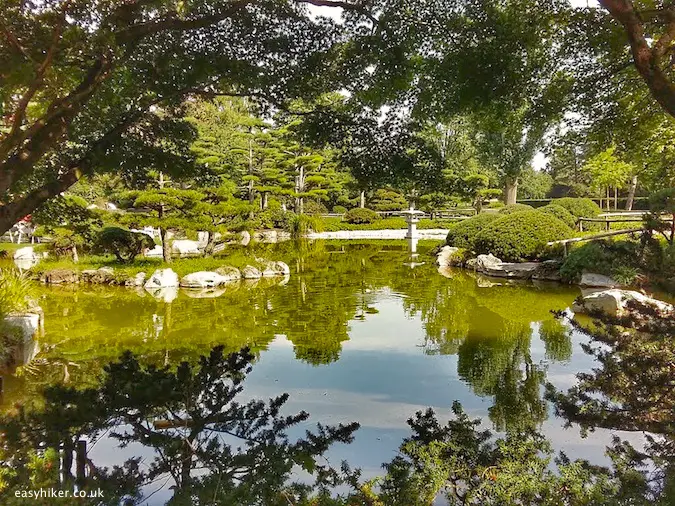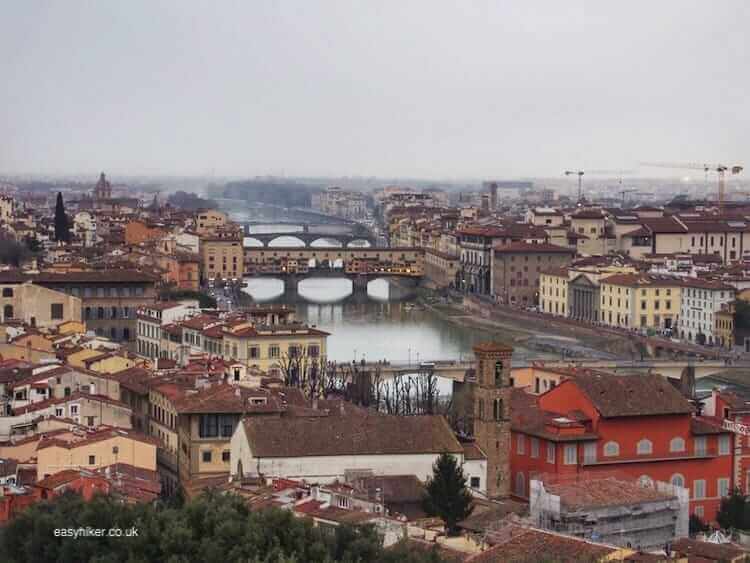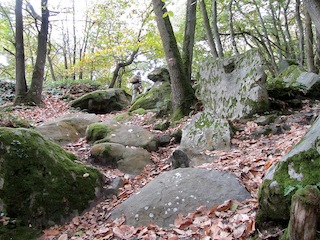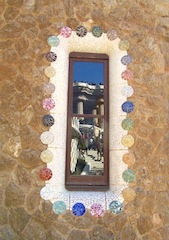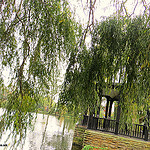This is our last post of Münster, that jewel of North-Rhine-Westphalia, …

… and the number one daytrip destination of Germany’s most populous if not (in general) most picturesque regional state.
For many years, we have invited you to accompany us on our exploration of the city, encouraging you to discover Münster’s works of modern artthat tastefully embellish the historic town centre’s architecture, its garden-like city streets and some moated castles in the area.
Leaving the Lushest Bits of Münster for Last
It turns out we have kept the best for last – not from some intent of deliberately withholding anything, but because we only discovered today’s walk fairly recently ourselves. Which only proves that the world is full of surprises – and that you never know a place as well as you may think you do.
There always remains something new to discover!

We start our walk at the Aasee, the city lake that we have visited a couple of times before, and pass underneath the bridge – called the Goldene Brücke – that you will find on the right hand side if you are coming from the town centre.
Straight away on the other side of the road underpass, an array of lush flora will greet you.

The body of water on your left may look like a side branch of the Aasee but is, in fact, the continuation of the river Aa which flows right through the lake.
Where the river appears to vanish under asphalt, turn right to cross the asphalted walkway on your right – the tree-lined Promenade that was built on top of the city wall in the 1770s – and descend to the lower level on its far side.
Turn right until you reach the municipal pool, called the Stadtbad Mitte. Behind the building, turn left to meet the River Aa again, or the Münstersche Aa as it is officially called to distinguish it from the 12 other rivers which go by the same name in Germany alone. (Another two dozen or so are scattered across northern Europe.)
This is also the only place in town where you can find actual remains of the ancient 13th century town wall.

Follow the river to the busy road called Stadtgraben, cross over to the other side and enter the foot path on the Aa’s left bank. This is where the central section of our river walk starts.

For the next kilometre or so, you will mainly stay down by the river, a metre or two below the level on which the town conducts its business, although here and there, you will encounter some bridges that need crossing …
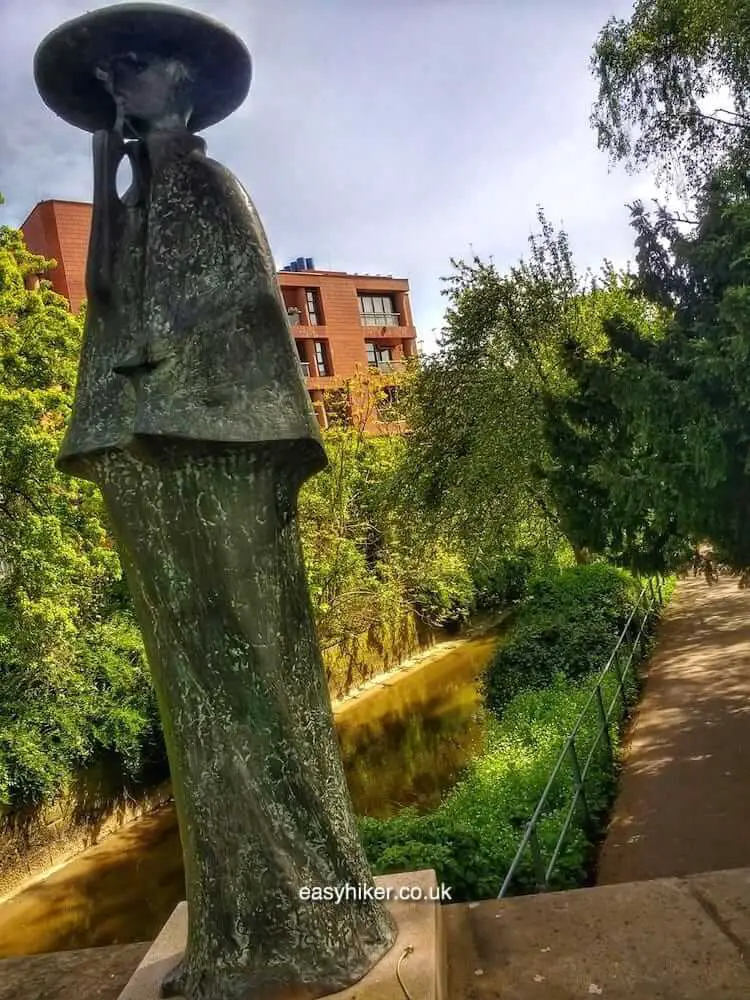
… as well as others that do not.

Some crossings invite you to take a peek at the city’s architecture …

… but most of the time, you will only see the historic buildings shimmer through trees and leaves.

You will also pass various university buildings, above all the Law faculty, …

… the modern university’s largest, which is followed by its oldest, the faculty of Catholic Theology.
What looks like a traffic pole or some other piece of street furniture just outside the Institute, by the way, is nothing of the sort but a work of art called Verkürzter Himmel or Shortened Heaven that was created by Giovanni Anselmo for the Skulpturen exhibition of 1987.

Passing the university, you will also get a taste of student life, which appears – judging from the evidence on show – largely to consist of sitting dreamily under leafy trees in front of some ancient and some modern art. (Which is not how I remember my own student days. I must have been doing something wrong.)
Although students and academics have been using this path for centuries, it is today mainly known for a later episode: in the 1930s, Sister Laudeberta, working as a nurse at a facility for mentally handicapped patients, witnessed at first hand the initial stages of the Nazi’s T4 plan to eradicate the “unworthy lives”, as they called it, of her charges.
Sister Laudeberta decided to inform the Bishop of Münster, Clemens August Count von Galen, of what she had seen, and it was his series of thundering sermons that forced the Nazis – who feared the aristocratic bishop’s power and influence – to temporarily scale down their first program of mass murder.
This path was used by Sister Laudeberta on her way between the hospital and the Archbishop’s office in the town centre and was, after WWII, named after her.

Where you want to finish the walk is ultimately up to you. From the crossing with Neubrückenstraße, the city’s municipal theatre on your right, the gravel-covered foot path will continue for another couple of kilometres into the northern suburbs, but you have already seen the best of it and on top of that will need a bus to return from there.
It is probably best to leave the river walk in this quiet part of the city where “central Münster” merges into its more residential quarters and walk the short way back into the town centre.

This is not a long walk, and you could probably complete it in a little more than one hour. We suggest, however, to reserve roughly twice as much in your travel schedule to take your time along the way, to sit down on a bench in particularly picturesque spots for a few minutes at a time and to have a cup of coffee or an ice cream in town when you are forced to leave the trail to cross a street via an overpass.
Always remember: who travels slowly, travels best.


